Deana J. Driver's Blog, page 9
August 2, 2018
It's Potty Time in Europe
It's potty time in Europe! Yes, it's time to check out some of the places in which one can dispose of their ... er... waste while in France, Germany, and Switzerland.
On a recent vacation in Europe, my friend and fellow author Janice Howden and I saw amazing scenery, churches, canals, castles and more. But I was also intrigued by the variety of toilets we saw on our journey - because my weird mind works that way.
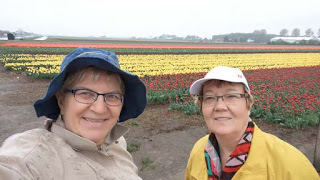 Jan (right) is the author of Rescued, her puppy dog's true story of finding a forever home. Jan and I were thrilled to see tulip fields for the first time.
Jan (right) is the author of Rescued, her puppy dog's true story of finding a forever home. Jan and I were thrilled to see tulip fields for the first time. No, there is no toilet in this photo. It's just a photo of us during one of the best moments of our trip. We loved the tulip fields in the Netherlands.
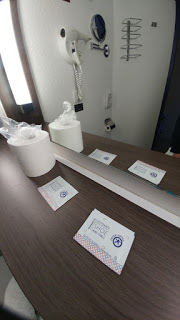 I found it interesting that European hotel rooms often have shoe shine cloths but no wash cloths or facial tissue, like those we are accustomed to using in North America. So you can clean your shoes but not use something to wash your face or wipe your nose.
I found it interesting that European hotel rooms often have shoe shine cloths but no wash cloths or facial tissue, like those we are accustomed to using in North America. So you can clean your shoes but not use something to wash your face or wipe your nose.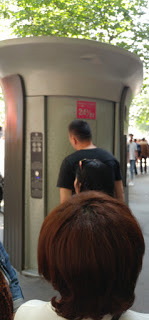 We used this new-fangled, self-cleaning public toilet in Paris. It is on a sidewalk near the Notre Dame Cathedral. You press a button to enter. The door opens and closes behind you.
We used this new-fangled, self-cleaning public toilet in Paris. It is on a sidewalk near the Notre Dame Cathedral. You press a button to enter. The door opens and closes behind you.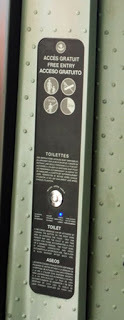 After you've done your business, you wash and blow-dry your hands. You press a button inside to exit the toilet. Then the door closes and locks so the toilet can clean itself with sanitizing water/spray before it allows the next person to enter. But you have to be done in 20 minutes or the toilet door opens! And you'd better not wait until the last minute to get in line because it takes a LONG time with the toilet cleaning after each person is done. You're better off using a pay toilet or going to a restaurant and buying something to use their toilet. The toilet room staff in those places help maintain cleanliness and ensure safety.
After you've done your business, you wash and blow-dry your hands. You press a button inside to exit the toilet. Then the door closes and locks so the toilet can clean itself with sanitizing water/spray before it allows the next person to enter. But you have to be done in 20 minutes or the toilet door opens! And you'd better not wait until the last minute to get in line because it takes a LONG time with the toilet cleaning after each person is done. You're better off using a pay toilet or going to a restaurant and buying something to use their toilet. The toilet room staff in those places help maintain cleanliness and ensure safety. 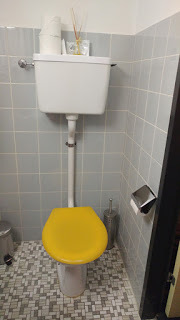 This toilet in our hotel room in Basel, Switzerland gained my respect for its use of gravity. The tank is the highest placement above the toilet bowl than any I've ever seen. You even have to reach up a bit to use the flushing handle. Obviously not meant to be operated by children.
This toilet in our hotel room in Basel, Switzerland gained my respect for its use of gravity. The tank is the highest placement above the toilet bowl than any I've ever seen. You even have to reach up a bit to use the flushing handle. Obviously not meant to be operated by children.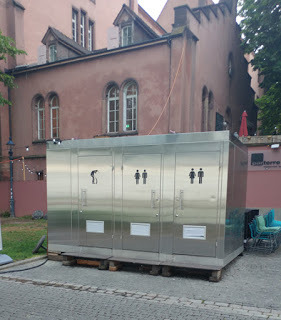 This fascinating trio of public toilets sits in Basel, Switzerland, beside a walking path along the Rhine River. I didn't go inside any of these street toilets, but I was very curious about the toilet on the left with the large, peeing man on it. His hat is probably a sleep hat, but I couldn't help thinking he was a jester from the old days. Stay tuned on that one...
This fascinating trio of public toilets sits in Basel, Switzerland, beside a walking path along the Rhine River. I didn't go inside any of these street toilets, but I was very curious about the toilet on the left with the large, peeing man on it. His hat is probably a sleep hat, but I couldn't help thinking he was a jester from the old days. Stay tuned on that one...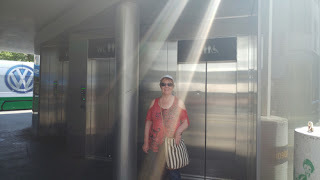 Jan posed in front of this collection of self-cleaning toilets in downtown Basel. These toilets had better signage inside to explain the various functions.
Jan posed in front of this collection of self-cleaning toilets in downtown Basel. These toilets had better signage inside to explain the various functions. The interior, although wet from the last sanitizing wash, was sparse and clean.
The interior, although wet from the last sanitizing wash, was sparse and clean.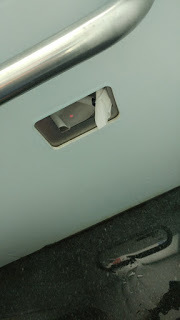 Toilet paper, anyone? It self-dispenses when you put your hand near it.
Toilet paper, anyone? It self-dispenses when you put your hand near it.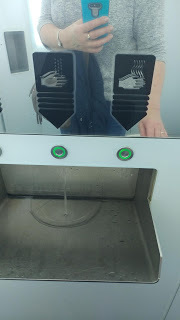 Water to wash. Dryer to dry.
Water to wash. Dryer to dry.
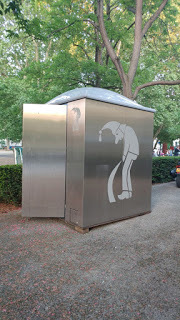 At a public park in Switzerland, my curiosity got the best of me and I decided to see what this toilet was like inside. Big mistake. BIG! The image on the outside was the only funny thing about this toilet.
At a public park in Switzerland, my curiosity got the best of me and I decided to see what this toilet was like inside. Big mistake. BIG! The image on the outside was the only funny thing about this toilet.There are doors on both sides. Just standing near the entrance to one of the open doors was enough for me. Inside was a long trough on either side - one for Number One and one for Number Two. They were not cleaned out. If there was a flushing mechanism, it had not been used. I did not see anything for hand washing. I'm hoping I just missed these essential items because I left so quickly. Ewwwww! No wonder the doors were left open on both sides.
At least in the outhouse on the farm where I grew up in Western Canada, everything was down one hole dug into the ground, out of plain view, and the open air reduced the smell, especially in winter. Yuk.
Sorry about that. Moving on...
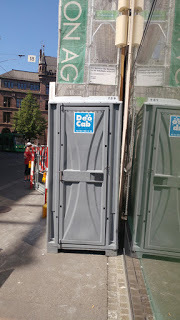 Now this I recognize! It's a Port-a-potty - European style - at a construction site in Switzerland.
Now this I recognize! It's a Port-a-potty - European style - at a construction site in Switzerland.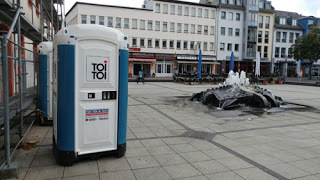 In Koblenz, Germany we saw these portable potties at a downtown market square. I couldn't resist taking a photo of them with the fountain in the foreground. Maybe the water helps some people "go".
In Koblenz, Germany we saw these portable potties at a downtown market square. I couldn't resist taking a photo of them with the fountain in the foreground. Maybe the water helps some people "go".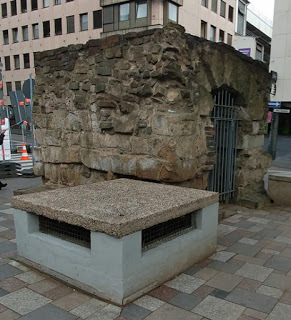 And now, we go back to the time before Christ, when the Romans had sewage systems, indoor plumbing and heated floors. These are the remains of a Roman sewer system in Cologne. Fascinating.
And now, we go back to the time before Christ, when the Romans had sewage systems, indoor plumbing and heated floors. These are the remains of a Roman sewer system in Cologne. Fascinating.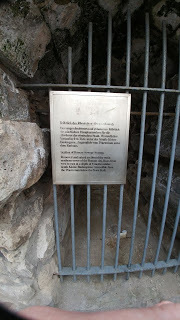 The Romans had running water, treated sewage, and other services that disappeared for generations after wars destroyed their innovations. So sad is the damage caused by war.
The Romans had running water, treated sewage, and other services that disappeared for generations after wars destroyed their innovations. So sad is the damage caused by war. Ah, now, this is the toilet style I am used to - a flushing toilet, a clean bathroom, a sink to wash up - except the toilet paper is considerably lower down here than you'll see in North American bathrooms. I don't understand the thinking, but this was on a river cruise ship, so maybe space was a factor. It worked, though, except in the middle of the night once, when I had to search for the roll I had accidentally knocked off its low hanger. Oops.
Ah, now, this is the toilet style I am used to - a flushing toilet, a clean bathroom, a sink to wash up - except the toilet paper is considerably lower down here than you'll see in North American bathrooms. I don't understand the thinking, but this was on a river cruise ship, so maybe space was a factor. It worked, though, except in the middle of the night once, when I had to search for the roll I had accidentally knocked off its low hanger. Oops.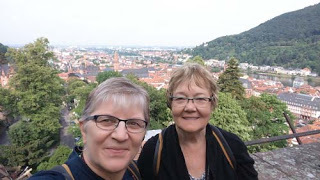
And that concludes my look at some potties in some parts of Europe.
As our friend, the late Bob Hughes, former sports editor and managing editor of the Regina Leader-Post used to say, "Y'er welcome.”
Published on August 02, 2018 15:42
May 24, 2018
Just a typical day in book publishing - or not
What’s happening in the world of DriverWorks Ink publishing?
I’ve been asked on occasion what it’s like to work in the book publishing industry. This seems as good a time as any to give you a peek into my work life as a small, sole-proprietor, book publisher in Canada. Hold on, 'cause there's a lot going on!
Since I went back to work this week after enjoying three almost-uninterrupted weeks of vacationing in Europe (with Saskatoon author and friend Janice Howden), the wheels of my publishing company – mentally and physically-speaking – have been constantly turning. (By the way, the vacation was amazing. You can view some photos and videos on the DriverWorks Ink Facebook page or YouTube channel, or my Instagram.)
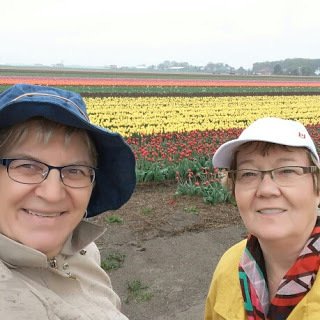 Deana Driver and Janice Howden enjoying their first view of tulip fields in the Netherlands, April 2018
Deana Driver and Janice Howden enjoying their first view of tulip fields in the Netherlands, April 2018Within the first two days of being back at work, I mailed and/or shipped some book orders to people who ordered from our website (thank you!) and to bookstores and other purchasers (thank you!). These orders were in addition to those my daughter Dani shipped while I was away. Thank you, Dani, for taking such good care of DriverWorks Ink while I was away!
In the pile of mail waiting for me, I found a beautiful magazine from the Canadian Children’s Book Centre. They’ve named Skye Bird and the Eagle Feathers, which is Saskatoon author Mary Harelkin Bishop’s latest children’s novel, as one of the 2018 Best Books for Kids and Teens, in Junior and Intermediate Fiction! Skye Bird is about a First Nations girl who is determined to make her new school a friendly, welcoming place for herself and her friends. This great kids’ story is one of only two Saskatchewan-published books included on the Best Books list – the other book is also from a small, hybrid publisher in Saskatchewan – so that’s quite an honour that we will gratefully cherish.

To follow up on that honour, I was delighted to ship some boxes of Skye Bird and the Eagle Feather books to Chapters Indigo to be sold on a national scale. So look for it soon at a bookstore near you. Or you can always buy it from our website. (Schools and libraries should contact me directly for a discount.)
And then there is this – two new books arrived from the printer just before I went away on vacation, so that was fun! And hectic. Once a new book arrives at my door, the hard work of creating it is done and the process continues to get it out to market. That includes sending information to all the bookstores and other vendors, to media about launch and signing dates, getting the book up onto our web page and social media pages, as well as the sites we partner with, and working our tails off (I’m talking about myself and the authors) to let people know about these great new books. (That "people" includes you. I’m telling you now.
Published on May 24, 2018 13:46
April 17, 2018
Creative Saskatchewan changes to book publishing production grant leave 40 Sask publishers out in cold
DriverWorks Ink is extremely disappointed that Creative Saskatchewan (CS) has chosen to stop accepting book publishing production grant applications for any book that is published with use of author funds. Due to this change in criteria and because of our business model, DriverWorks Ink will no longer be eligible to apply for book publishing production grants from Creative Saskatchewan. As a writer, author, editor, book publisher, entrepreneur, and former journalist, I am frustrated enough to write about this appalling, unexplained turn of events.
DriverWorks Inkis a hybrid book publisher that, since 2008, has worked in partnership with authors to publish books about Prairie people written by Saskatchewan and other Prairie writers. We have been successful in obtaining funding for more than a dozen books in the last five years. This makes it especially disheartening to be told that our product is no longer good enough.
Most of our books which received grant money returned a profit (income over production costs), and many of them were profitable within the first six months to a year. Our profits come from book sales, with authors receiving royalties from those sales. Our goal is profitability.
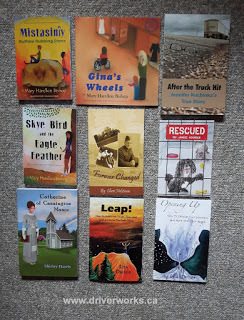 Six of these nine of our CS-grant-receiving books that were published with author investment have also won awards.
Six of these nine of our CS-grant-receiving books that were published with author investment have also won awards.With Creative Saskatchewan’s announcement on April 16, 2018, the grant’s name also changed from Creative Industries Production Grant to Book Publishing Grant. In my jaded view, this more clearly singles out book publishing and, it feels to me, takes aim at significantly reducing the number of wonderful, important books published in this province. I will not say that it will sound a death knell to our book publishing industry – we are stronger than that – but it will change the landscape significantly. Not in a good way.
The new eligibility criteria for the CS Book Publishing Grant means that only five or six of the 45 book publishers in Saskatchewan will have eligible book projects. It means that 40 of the publisher members of SaskBooks/Saskatchewan Publishers Group , including DriverWorks Ink, will no longer be eligible for book publishing production grant support from Creative Saskatchewan as most if not all of their published books include income investment from authors. Although we may still apply for funding to assist with marketing and business capacity development, many amazing Saskatchewan-based books will not be published because of lack of funds, and there will be little point in marketing or growing a business that has no new product.
The new criteria states that books with support from the Canada Book Fund (federal funding) may be eligible for “fast-track” approval without jury adjudication. Creative Saskatchewan’s website states: “Our investments propel creative entrepreneurs as they create, innovate, expand, and perform, in their pursuit of commercial success.” While I support funding from provincial granting agencies for any worthwhile book projects, I am extremely concerned that this change to Creative Saskatchewan’s book publishing fund provides potentially guaranteed funding for book projects subsidized by other agencies and not even a consideration of funding for entrepreneurmodels that have a good book to publish which will sell commercially and add to the province’s GDP – which are threeof Creative Saskatchewan’s mandated goals.
The Book Publishing Grant’s new criteria requires that eligible applicants must have been in operation for two years and have four eligible (read “with no author funds”) titles in print essentially blocks our industry’s growth because actual entrepreneurs and those starting in the industry have no access to funding support. It goes against why Creative Saskatchewan was set up in the first place.
This province, unlike the other jurisdictions in Canada, has never made a practice of supporting trade publishing (which is the general-audience scope for most of the DriverWorks Ink books), so trade publishing had to come up with an alternative model which includes hybrid and self-publishing. That model in Saskatchewan has become an accepted practice in the industry across North America, but Creative Saskatchewan’s guidelines seem to be ill-advisedly supporting only publishing projects which may already receive product investment from the public sector. Why is that?
I am concerned for the future of our vibrant book publishing industry in Saskatchewan, in which I have worked for the past 17 years. I have watched it grow in strength and quality and I am grateful to Creative Saskatchewan for assisting with some of that growth. More than 100 books are published annually in Saskatchewan – most of them by the smaller publishing houses. I fear that the numbers will decrease significantly because of this change in the grant program, important cultural books will go unpublished and businesses will close their doors.
When I was a board member of SaskBooks, the creative industry member organization for publishers in the province, I spent dozens of hours at the board table with various representatives of Creative Saskatchewan, many of whom had come to CS from other creative industries and knew very little about book publishing. I thought we had provided education on the diverse and commercially viable business models in the publishing sector and how our member publishers collectively believe that funds coming in from one source versus another is irrelevant to the stated goals of the grant – commercial viability and growing the province’s GDP. I thought we had proven time and again the value of our member organization’s programs and processes.
I love Saskatchewan, which is built on the entrepreneurial spirit, and I am deeply concerned by this withdrawal of support for valuable books produced by entrepreneurs. I ask Creative Saskatchewan to reconsider this decision.
Creative entrepreneurs focussed on the commercial success of their published books and businesses are being excluded from the publishing grant application process. It’s time to correct this error and do it quickly. We have stories to tell and we want your help to do so, Creative Saskatchewan.
Published on April 17, 2018 10:45
April 8, 2018
Easter and Hope
This is an Easter story. A story with some hope.
I recently had three very different conversations with three very different people whom I had not seen or talked with for a long time.
The first conversation was with a woman who contacted me to say I had been on her mind a lot lately and she wondered if I wanted to get together for coffee. The introverted voice in my head wanted to decline, but the “new me” who knows I need to step out of my comfort zone if I want any semblance of a happier life took a chance and said yes. We had a wonderful visit, even though we were born decades apart and have very little in common in our everyday lives. We both have a journalism background and a wacky sense of humour. This sense of humour is something I cherish and something I recognize in most of my journalism friends. It is a coping mechanism we develop for when the world goes crazy. We talked about my "new life", how I'm doing, how she's doing, her new job, and a number of other topics.
Conversation One was a success. We plan to get together again.
In the course of idle chit-chat during Conversation Two with another person, I was asked why I kept mentioning my late husband Al in conversations where it wasn't pertinent. I was shocked by the question. I could not say anything of value in response. How could I tell someone I love what was really in my heart? Could anyone else understand? That even though my life has changed so dramatically in the past two years since Al’s death, Al will always be part of my daily life. No matter where I am, what I'm doing or who I'm doing it with, Al will be there and I will always talk about him and his importance as a past, present, and future part of my life – whether others think it is pertinent or not. Talking about Al won't stop me from "moving on", as the real world wants grieving persons to do. It will keep me strong, cherishing our times together while I live the rest of my life without him.
So parts of Conversation Two were not as successful as Conversation One. The person had unknowingly hurt me and I was saddened by this question and the assumptions around it. It shook me up for quite awhile, so I spoke to my minister about it.
This was Conversation Three. She identified that what I was feeling was the guilt and shame that others impose – knowingly or unknowingly – when they are uncomfortable with those who are grieving. The person's comment was more about their feelings than it was about my actions, she said. It happens often. It should not, but it does. We are humans and humans are flawed.
Although I was still sad about Conversation Two, I soon felt much better because, as I looked up from where I was standing in our church with my minister, I saw a huge butterfly at the front of the sanctuary. I was amazed and thrilled. I often see butterflies when I think of Al. They are one of the angel signs he sends me to let me know he is with me and is supporting me still from beyond. My minister was pleased and accepting when I told her of this sign from my husband. "These things happen," she said, referring to signs from departed loved ones. You see, my minister is wise and is not about to discount things we cannot necessarily see. After all, believing in things we cannot see is the basis of the Christian faith.
We walked into the sanctuary together, so I could get a closer look at this magnificent butterfly kite she had brought in as a symbol of Easter and Christ’s resurrection. It is a beautiful symbol of life after death. Of miracles. Of hope.
Conversation Three with my minister – and apparently with Al too – was a success.
I have not spoken to the person about the conversation that hurt me. I know they are carrying their own heavy burdens and although that does not excuse their questioning, it does explain it somewhat. This conversation and question may be unresolved forever and I am prepared to live with that. I too have hurt people unintentionally and sometimes intentionally. I am human. I am flawed. I live in hope for better days ahead.
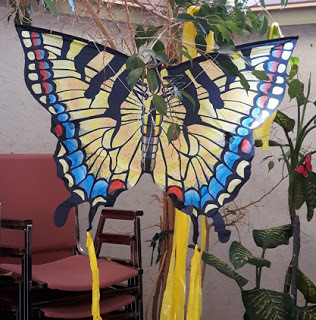
(Read more about angel signs and working with your angels in our daughter Lisa Driver's first book, Opening Up.)
I recently had three very different conversations with three very different people whom I had not seen or talked with for a long time.
The first conversation was with a woman who contacted me to say I had been on her mind a lot lately and she wondered if I wanted to get together for coffee. The introverted voice in my head wanted to decline, but the “new me” who knows I need to step out of my comfort zone if I want any semblance of a happier life took a chance and said yes. We had a wonderful visit, even though we were born decades apart and have very little in common in our everyday lives. We both have a journalism background and a wacky sense of humour. This sense of humour is something I cherish and something I recognize in most of my journalism friends. It is a coping mechanism we develop for when the world goes crazy. We talked about my "new life", how I'm doing, how she's doing, her new job, and a number of other topics.
Conversation One was a success. We plan to get together again.
In the course of idle chit-chat during Conversation Two with another person, I was asked why I kept mentioning my late husband Al in conversations where it wasn't pertinent. I was shocked by the question. I could not say anything of value in response. How could I tell someone I love what was really in my heart? Could anyone else understand? That even though my life has changed so dramatically in the past two years since Al’s death, Al will always be part of my daily life. No matter where I am, what I'm doing or who I'm doing it with, Al will be there and I will always talk about him and his importance as a past, present, and future part of my life – whether others think it is pertinent or not. Talking about Al won't stop me from "moving on", as the real world wants grieving persons to do. It will keep me strong, cherishing our times together while I live the rest of my life without him.
So parts of Conversation Two were not as successful as Conversation One. The person had unknowingly hurt me and I was saddened by this question and the assumptions around it. It shook me up for quite awhile, so I spoke to my minister about it.
This was Conversation Three. She identified that what I was feeling was the guilt and shame that others impose – knowingly or unknowingly – when they are uncomfortable with those who are grieving. The person's comment was more about their feelings than it was about my actions, she said. It happens often. It should not, but it does. We are humans and humans are flawed.
Although I was still sad about Conversation Two, I soon felt much better because, as I looked up from where I was standing in our church with my minister, I saw a huge butterfly at the front of the sanctuary. I was amazed and thrilled. I often see butterflies when I think of Al. They are one of the angel signs he sends me to let me know he is with me and is supporting me still from beyond. My minister was pleased and accepting when I told her of this sign from my husband. "These things happen," she said, referring to signs from departed loved ones. You see, my minister is wise and is not about to discount things we cannot necessarily see. After all, believing in things we cannot see is the basis of the Christian faith.
We walked into the sanctuary together, so I could get a closer look at this magnificent butterfly kite she had brought in as a symbol of Easter and Christ’s resurrection. It is a beautiful symbol of life after death. Of miracles. Of hope.
Conversation Three with my minister – and apparently with Al too – was a success.
I have not spoken to the person about the conversation that hurt me. I know they are carrying their own heavy burdens and although that does not excuse their questioning, it does explain it somewhat. This conversation and question may be unresolved forever and I am prepared to live with that. I too have hurt people unintentionally and sometimes intentionally. I am human. I am flawed. I live in hope for better days ahead.

(Read more about angel signs and working with your angels in our daughter Lisa Driver's first book, Opening Up.)
Published on April 08, 2018 16:18
March 1, 2018
Five Things you can say in February in the Bahamas but not in Saskatchewan
I recently had the opportunity to travel to Nassau, Bahamas for a week of vacation with my youngest daughter, Dani.
We had a wonderful, restful time.
The differences between the weather we left at home in Saskatchewan, Canada and what we experienced in the Bahamas were striking. See for yourself.
Here's my idea of "Five Things you can say in February in the Bahamas but not in Saskatchewan":
1. "My swimsuit is still wet, but I'll put it on anyway. It'll dry quickly."
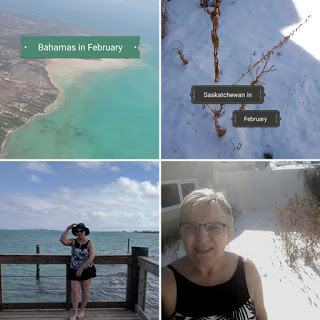
It was 28 degrees Celsius in Nassau every day we were there, even after a little rain fell on a couple of evenings. Saskatchewan weather was unusually warm when we weer away, ranging from 1 degree to minus 16 Celsius, but it was no 28!
2. "There's a turtle!"
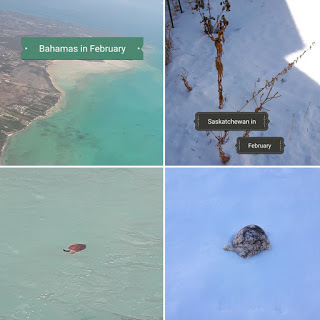
One of our biggest hopes was to see a sea turtle in the ocean, and we had that wish come true every day as we looked out from a nearby pier. The turtle didn't come close enough for a great photo, but we'll carry those images and excitement in our hearts. The turtle on the right is a horsehair pottery souvenir purchased in Arizona years ago.
3. "Look at those pretty flowers!"
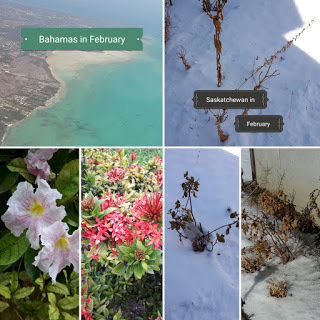
Tropical flowers versus frozen rose bushes. Sigh. We can hardly wait for summer in Saskatchewan.
4. "Oh, thank God for that wind! It would be so hot otherwise."
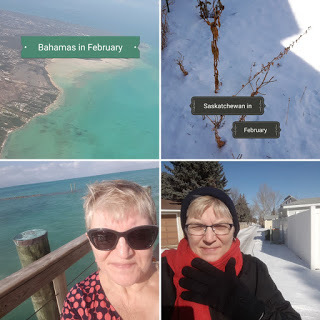
Even though the wind stirred up the ocean and blew my hair all over the place, I love the the feeling of standing on a pier, staring at the clear blue water. The wind in Regina, Saskatchewan, on the other hand, can be downright nasty. Even after wearing my toque yesterday while going for a long walk, my ears hurt for hours. Sigh again. But Saskatchewan is home and I love it here.
Which leads nicely into the final thing
you can say in the Bahamas in February
but you can't say it in Saskatchewan...
5. "I'm just going to leave my shoes here and go barefoot for awhile."
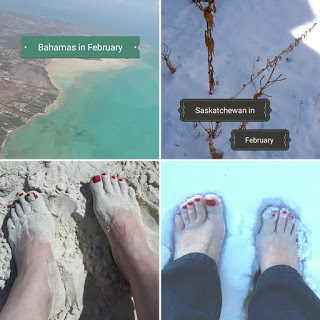
Nope. Not even for a minute.
Underneath those feet on the right are flip flops sitting in the snow. I'm not that crazy!
Have a great day, everyone!
We had a wonderful, restful time.
The differences between the weather we left at home in Saskatchewan, Canada and what we experienced in the Bahamas were striking. See for yourself.
Here's my idea of "Five Things you can say in February in the Bahamas but not in Saskatchewan":
1. "My swimsuit is still wet, but I'll put it on anyway. It'll dry quickly."

It was 28 degrees Celsius in Nassau every day we were there, even after a little rain fell on a couple of evenings. Saskatchewan weather was unusually warm when we weer away, ranging from 1 degree to minus 16 Celsius, but it was no 28!
2. "There's a turtle!"

One of our biggest hopes was to see a sea turtle in the ocean, and we had that wish come true every day as we looked out from a nearby pier. The turtle didn't come close enough for a great photo, but we'll carry those images and excitement in our hearts. The turtle on the right is a horsehair pottery souvenir purchased in Arizona years ago.
3. "Look at those pretty flowers!"

Tropical flowers versus frozen rose bushes. Sigh. We can hardly wait for summer in Saskatchewan.
4. "Oh, thank God for that wind! It would be so hot otherwise."

Even though the wind stirred up the ocean and blew my hair all over the place, I love the the feeling of standing on a pier, staring at the clear blue water. The wind in Regina, Saskatchewan, on the other hand, can be downright nasty. Even after wearing my toque yesterday while going for a long walk, my ears hurt for hours. Sigh again. But Saskatchewan is home and I love it here.
Which leads nicely into the final thing
you can say in the Bahamas in February
but you can't say it in Saskatchewan...
5. "I'm just going to leave my shoes here and go barefoot for awhile."

Nope. Not even for a minute.
Underneath those feet on the right are flip flops sitting in the snow. I'm not that crazy!
Have a great day, everyone!
Published on March 01, 2018 13:37
February 14, 2018
Do they celebrate Valentine's Day in Heaven?
Today is Valentine's Day, a day we are supposed to celebrate the one person who loves us and whom we love. For many people, it's just another day. No big deal. And that is as it should be.
Why put pressure on ourselves if we happen to be single, without a partner, on February 14th?
Wait until tomorrow, buy yourself a box of chocolates on sale, and carry on.
My late husband Al and I rarely celebrated Valentine's Day. We preferred to tell each other "I love you" every day and we avoided the commercialism of Valentine's Day after our first few years of marriage.
February 14th was always special in another way, though, because it is my mom's birthday. She was a Valentine's Day baby, but she rarely celebrated it.
In our Ukrainian-Polish farm family, we didn't make a big deal about birthdays. If someone wished us a happy birthday or we received a gift of pyjamas or maybe a candy bar or - wow! - a cake, that was about it for a celebration. In fact, a celebration was unusual. As we got older, we sometimes were allowed to invite a friend to take the bus home from school and sleep over at our house. That's a celebration in itself to farm kids.
In Al's English-Irish city family, birthdays were a HUGE deal! Your birthday day was "all about you" and you didn't even have to do dishes that day! What a shock to my system.
Poor Al. His farm-kid wife never really understood this concept. It took him most of our married life to convince me that I was worth fussing over on my birthday. My kids have since taken over that burden to make me feel special, and they're doing a fine job of it.
Today, I am alone but not alone. My beautiful daughter-in-law Kelli dropped by with a lemon loaf that she knows I like, and we shared hugs and a nice visit.
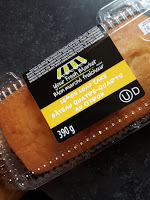
I'm going for a pedicure with my youngest daughter Dani after work. It will be the first pedicure for her and we are excited. I have also connected with our son, our oldest daughter, and the other in-laws. Everyone is fine.
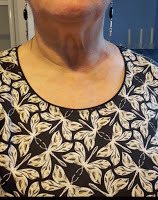
And in honour of love today, I put on a new shirt covered with a dragonflies pattern - a fascinating creature that reminds me of my late mom and my dear departed husband.
I hope they are dancing together in Heaven. I'm sure Al is making sure that today is all about Mom. Do they do dishes in Heaven?
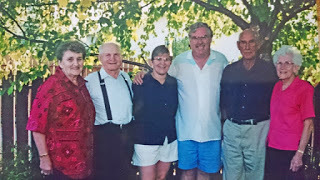 My parents, me and Al, Al's parents in the late 1990s
My parents, me and Al, Al's parents in the late 1990s
Why put pressure on ourselves if we happen to be single, without a partner, on February 14th?
Wait until tomorrow, buy yourself a box of chocolates on sale, and carry on.
My late husband Al and I rarely celebrated Valentine's Day. We preferred to tell each other "I love you" every day and we avoided the commercialism of Valentine's Day after our first few years of marriage.
February 14th was always special in another way, though, because it is my mom's birthday. She was a Valentine's Day baby, but she rarely celebrated it.
In our Ukrainian-Polish farm family, we didn't make a big deal about birthdays. If someone wished us a happy birthday or we received a gift of pyjamas or maybe a candy bar or - wow! - a cake, that was about it for a celebration. In fact, a celebration was unusual. As we got older, we sometimes were allowed to invite a friend to take the bus home from school and sleep over at our house. That's a celebration in itself to farm kids.
In Al's English-Irish city family, birthdays were a HUGE deal! Your birthday day was "all about you" and you didn't even have to do dishes that day! What a shock to my system.
Poor Al. His farm-kid wife never really understood this concept. It took him most of our married life to convince me that I was worth fussing over on my birthday. My kids have since taken over that burden to make me feel special, and they're doing a fine job of it.
Today, I am alone but not alone. My beautiful daughter-in-law Kelli dropped by with a lemon loaf that she knows I like, and we shared hugs and a nice visit.

I'm going for a pedicure with my youngest daughter Dani after work. It will be the first pedicure for her and we are excited. I have also connected with our son, our oldest daughter, and the other in-laws. Everyone is fine.

And in honour of love today, I put on a new shirt covered with a dragonflies pattern - a fascinating creature that reminds me of my late mom and my dear departed husband.
I hope they are dancing together in Heaven. I'm sure Al is making sure that today is all about Mom. Do they do dishes in Heaven?
 My parents, me and Al, Al's parents in the late 1990s
My parents, me and Al, Al's parents in the late 1990s
Published on February 14, 2018 14:07
January 23, 2018
Kintsugi Art and Healing From Grief
I broke some pottery the other day.
On purpose.
I hit it with a hammer. Then I took the broken pieces of that beautiful piece of pottery and put them back together. With glue. Then I painted over the cracks with gold paint and glitter.
It was a healing exercise.
 The pottery repair was one of the activities during self-care time at an all-day grief retreat hosted by Palliative Care Services, Saskatchewan Health Authority. The activity is called kintsugi, a Japanese art form meaning “golden joinery”, in which broken pieces are considered an essential part of the object and are embraced and highlighted instead of hidden.
The pottery repair was one of the activities during self-care time at an all-day grief retreat hosted by Palliative Care Services, Saskatchewan Health Authority. The activity is called kintsugi, a Japanese art form meaning “golden joinery”, in which broken pieces are considered an essential part of the object and are embraced and highlighted instead of hidden.
At the start of the kintsugi exercise, we each chose a piece to work on. We were asked to look at the whole, complete piece of pottery before we broke it and view it as though it was ourselves before we lost our loved ones.
We put the pottery piece inside a plastic bag, then inside an old pillowcase and tapped it with a hammer. We took the broken pieces out and carefully "rejoined" them using glue, masking tape, and help from others to hold them together until the glue set.
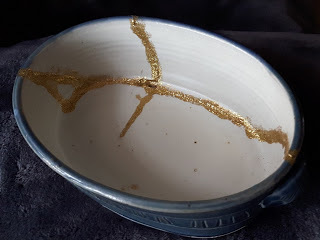 Then we either put more glue onto the cracks and sprinkled glitter over them or we painted the cracks with gold glittery paint. I did both. There was glitter everywhere. Many hands helped me along the way. A metaphor for healing.
Then we either put more glue onto the cracks and sprinkled glitter over them or we painted the cracks with gold glittery paint. I did both. There was glitter everywhere. Many hands helped me along the way. A metaphor for healing.
I attended the first Heart 2 Heart Family Grief Retreat, held in July 2017, as a participant (read my blog post ). It was a wonderful, full day of talking, crying, healing, and more. Since then, I helped co-facilitate a bereavement support group and I was honoured last fall to be asked to be one of the 40 or so volunteers for this January grief retreat.
Unlike some retreats and workshops I’ve attended in the past, the volunteers for Heart 2 Heart did more than lead the various groups for Loss of Child, Sibling, Parent or Spouse. They also actively participated in much of the day’s program, because they too had lost someone they loved – a family member or a close friend.
My role at the grief retreat was to provide peer support for a Loss of Spouse group, sharing a bit of my story about my husband’s death two years ago and talking about what has helped me on my grief journey. I know, from my own time as a participant and from other bereavement support I have received, that the words and actions of others have helped me. My goal was to help those who are just beginning their journey after losing their spouse.
The volunteers and participants shared their stories, insights and coping skills within the specific groups. During self-care time, the participants experienced massage, yoga or meditation, walked the outdoor labyrinth to reflect, or joined a discussion group to talk more about their loss and about strategies for moving forward. We ate meals together, allowing for more conversation, and finished the day with a memorial service complete with a choir (in which I participated) and the beautiful piano accompaniment of our leader, Bereavement and Volunteer Co-ordinator Marlene Jackson. Without her dedication and skills, this day would not have happened and I definitely would not have been there. I owe her much gratitude for helping me along my path.
There were many tears shed that day, but there was also much healing.
I came home from the grief retreat completely exhausted. Mentally, emotionally and physically.
But I met some wonderful people – participants and volunteers. That made the day good.
I knew I had healed a bit more. That made the day great.
And I knew I had helped others on their journey. That made the day amazing.
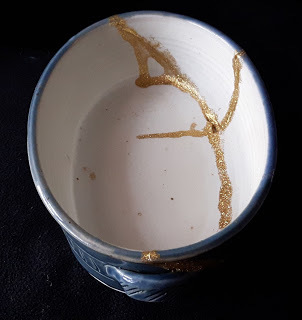 I also came home with a beautiful piece of repaired pottery – a physical reminder of my grief journey.
I also came home with a beautiful piece of repaired pottery – a physical reminder of my grief journey.
The repairs to my pottery are not perfect, but neither is my grief. The glue and glitter are bumpy and lumpy and messy in spots. So is my grief.
The cracked lines may join the pieces together but there are still holes in my pottery and there are cracks that I did not yet glue together.
Such is my grief.
Such is my life after loss.
I will always miss my late husband Al. I am still profoundly sad and there are tears shed almost every day, but I am allowing myself to feel my pain and I am working through it.
There will be a hole in my heart every day for the rest of my life because of his death, but events like this grief retreat and bereavement counselling have helped me start to heal those cracks and carry on the best I can.
My brokenness is part of me. I will hold it together as best I can and maybe, occasionally, at events like the grief retreat, I can even show it off, helping others along the way.
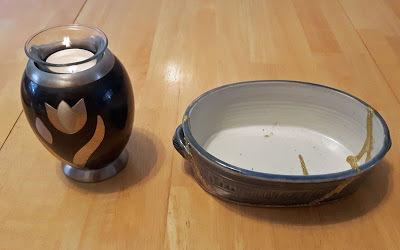
(Another of my blog posts you may be interested in, What I've Learned About Grief , includes tips for those who are grieving and what to say and not say to the bereaved)
On purpose.
I hit it with a hammer. Then I took the broken pieces of that beautiful piece of pottery and put them back together. With glue. Then I painted over the cracks with gold paint and glitter.
It was a healing exercise.
 The pottery repair was one of the activities during self-care time at an all-day grief retreat hosted by Palliative Care Services, Saskatchewan Health Authority. The activity is called kintsugi, a Japanese art form meaning “golden joinery”, in which broken pieces are considered an essential part of the object and are embraced and highlighted instead of hidden.
The pottery repair was one of the activities during self-care time at an all-day grief retreat hosted by Palliative Care Services, Saskatchewan Health Authority. The activity is called kintsugi, a Japanese art form meaning “golden joinery”, in which broken pieces are considered an essential part of the object and are embraced and highlighted instead of hidden.At the start of the kintsugi exercise, we each chose a piece to work on. We were asked to look at the whole, complete piece of pottery before we broke it and view it as though it was ourselves before we lost our loved ones.
We put the pottery piece inside a plastic bag, then inside an old pillowcase and tapped it with a hammer. We took the broken pieces out and carefully "rejoined" them using glue, masking tape, and help from others to hold them together until the glue set.
 Then we either put more glue onto the cracks and sprinkled glitter over them or we painted the cracks with gold glittery paint. I did both. There was glitter everywhere. Many hands helped me along the way. A metaphor for healing.
Then we either put more glue onto the cracks and sprinkled glitter over them or we painted the cracks with gold glittery paint. I did both. There was glitter everywhere. Many hands helped me along the way. A metaphor for healing.I attended the first Heart 2 Heart Family Grief Retreat, held in July 2017, as a participant (read my blog post ). It was a wonderful, full day of talking, crying, healing, and more. Since then, I helped co-facilitate a bereavement support group and I was honoured last fall to be asked to be one of the 40 or so volunteers for this January grief retreat.
Unlike some retreats and workshops I’ve attended in the past, the volunteers for Heart 2 Heart did more than lead the various groups for Loss of Child, Sibling, Parent or Spouse. They also actively participated in much of the day’s program, because they too had lost someone they loved – a family member or a close friend.
My role at the grief retreat was to provide peer support for a Loss of Spouse group, sharing a bit of my story about my husband’s death two years ago and talking about what has helped me on my grief journey. I know, from my own time as a participant and from other bereavement support I have received, that the words and actions of others have helped me. My goal was to help those who are just beginning their journey after losing their spouse.
The volunteers and participants shared their stories, insights and coping skills within the specific groups. During self-care time, the participants experienced massage, yoga or meditation, walked the outdoor labyrinth to reflect, or joined a discussion group to talk more about their loss and about strategies for moving forward. We ate meals together, allowing for more conversation, and finished the day with a memorial service complete with a choir (in which I participated) and the beautiful piano accompaniment of our leader, Bereavement and Volunteer Co-ordinator Marlene Jackson. Without her dedication and skills, this day would not have happened and I definitely would not have been there. I owe her much gratitude for helping me along my path.
There were many tears shed that day, but there was also much healing.
I came home from the grief retreat completely exhausted. Mentally, emotionally and physically.
But I met some wonderful people – participants and volunteers. That made the day good.
I knew I had healed a bit more. That made the day great.
And I knew I had helped others on their journey. That made the day amazing.
 I also came home with a beautiful piece of repaired pottery – a physical reminder of my grief journey.
I also came home with a beautiful piece of repaired pottery – a physical reminder of my grief journey.The repairs to my pottery are not perfect, but neither is my grief. The glue and glitter are bumpy and lumpy and messy in spots. So is my grief.
The cracked lines may join the pieces together but there are still holes in my pottery and there are cracks that I did not yet glue together.
Such is my grief.
Such is my life after loss.
I will always miss my late husband Al. I am still profoundly sad and there are tears shed almost every day, but I am allowing myself to feel my pain and I am working through it.
There will be a hole in my heart every day for the rest of my life because of his death, but events like this grief retreat and bereavement counselling have helped me start to heal those cracks and carry on the best I can.
My brokenness is part of me. I will hold it together as best I can and maybe, occasionally, at events like the grief retreat, I can even show it off, helping others along the way.

(Another of my blog posts you may be interested in, What I've Learned About Grief , includes tips for those who are grieving and what to say and not say to the bereaved)
Published on January 23, 2018 14:57
December 7, 2017
Seeing this "Little Coat" inspired a country singer to write an award-winning book
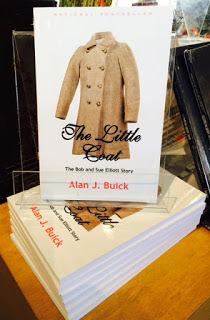 Canadian soldier Bob Elliott and his crew asked a Dutch seamstress to make this child's coat from a Canadian Army blanket. The buttons came from the soldiers' tunics. The soldiers gave the coat to their "good-luck charm", 10-year-old Sussie Cretier, on Christmas Day 1944.
Canadian soldier Bob Elliott and his crew asked a Dutch seamstress to make this child's coat from a Canadian Army blanket. The buttons came from the soldiers' tunics. The soldiers gave the coat to their "good-luck charm", 10-year-old Sussie Cretier, on Christmas Day 1944.Alan J. Buick was a full-time carpentry instructor and a part-time country singer when he noticed the unique child's coat in a case on display in Olds, Alberta. Here is what the first glimpse of that little coat meant to him:
Seeing the “little coat” for the first time - at the Royal Canadian Legion in Olds, Alberta in September 2004 - filled me with bewilderment more than passion. I asked a friend, who had come to hear my wife Carol and I play music that night, why this coat with Canadian Army buttons was displayed with all the wartime memorabilia; it was far too small for a soldier to have worn. My friend proceeded to relate some of the story behind its creation – it was a Christmas gift in 1944 from Canadian soldiers to a 10-year-old Dutch girl who had become a good-luck charm for them; she later brought the coat to Canada.
It was then that my passion for this tale began.
The most powerful moment was when I learned that the little Dutch girl who wore the coat and the soldier who gave it to her were not only still alive in 2004, but married to each other! I knew I had an epic by the tail! I had to find out more.
I contacted Bob and Sue Elliott - the Canadian soldier and the Dutch girl - who were at that time living in the Netherlands. The email address I'd been given for them failed, so snail mail was the only other choice. They replied to my letter and the journey to turn their story into a book began.
These were Sue's words: "I have no problem telling you what it was like growing up under Nazi rule, but good luck when you get to Bob!”
She was right. Bob, like many veterans, preferred not to talk about the horrors of war; the recollections opened old wounds long forgotten.
Bob and Sue and I met face-to-face at the Royal Canadian Legion hall in Olds, Alberta in October 2005 to discuss the procedure for writing this book. It was a truly amazing day. Just talking to these two wonderful people who had endured so much was an awe-inspiring experience for me.
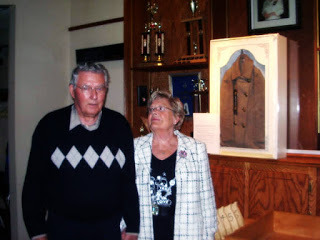 Bob and Sue (Sussie) Elliott in 2005 with Sue's little coat on display at the Royal Canadian Legion in Olds, Alberta, Canada.
Bob and Sue (Sussie) Elliott in 2005 with Sue's little coat on display at the Royal Canadian Legion in Olds, Alberta, Canada.I knew I had not collected all the information I needed that day. The journey I had chosen was both humbling and difficult. I was dealing with 65-year-old memories! A good example of this was the day before my publisher, Deana Driver, was to send the manuscript off to print, Sue told me of the German soldier who visited with her family frequently. This information had to be included in the book as it showed how not all German people were evil.
At the close of our 2005 meeting, Sue asked me what she should do with her little coat. I said it should be in a museum, where it would inform future generations of the compassion and generosity Canadian soldiers had for the emaciated and spiritually worn-down peoples of the Netherlands. They contacted the Canadian War Museum, which promptly sent two representatives to the Olds Legion to carefully prepare this ancient garment for the long flight to Ottawa.
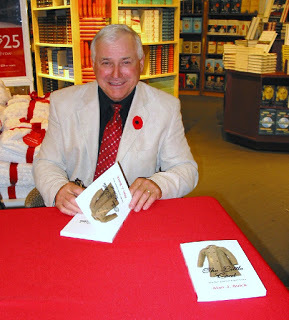 Alan J. Buick, author of the award-winning, Canadian best-selling book The Little Coat: The Bob and Sue Elliott Story, available from www.driverworks.ca Prior to the official book launch, scheduled to take place at the Olds Legion on November 11, 2009, a pre-launch gathering was held at the Armoury Officers' Mess in Regina. As strange as it may sound and with fate in our corner, one of the officials from the Embassy of the Kingdom of the Netherlands happened to be present that night, Hans Moor. We gave him a copy of my book,
The Little Coat: The Bob and Sue Elliott Story,
and he read it on his flight back to Ottawa.
Alan J. Buick, author of the award-winning, Canadian best-selling book The Little Coat: The Bob and Sue Elliott Story, available from www.driverworks.ca Prior to the official book launch, scheduled to take place at the Olds Legion on November 11, 2009, a pre-launch gathering was held at the Armoury Officers' Mess in Regina. As strange as it may sound and with fate in our corner, one of the officials from the Embassy of the Kingdom of the Netherlands happened to be present that night, Hans Moor. We gave him a copy of my book,
The Little Coat: The Bob and Sue Elliott Story,
and he read it on his flight back to Ottawa.A few weeks later, I was invited by him to attend a function at the Canadian War Museum in Ottawa to honour the Canadian soldiers of World War II who repatriated the Netherlands. This was an amazing evening. There was I, a New Zealand farmboy, rubbing shoulders and chatting with Dutch Ambassador Wim Geerts and General Charles Belzile, retired commander of the Canadian Forces! A truly humbling and memorable experience.
My most touching moment on that trip was seeing "the child's coat" in its restored state and mounted in a beautiful glass case, complete with a bronze plaque briefly explaining what it was and what it represented. It literally brought me to tears. The War Museum staff had done an excellent job of presenting this wonderful artifact.
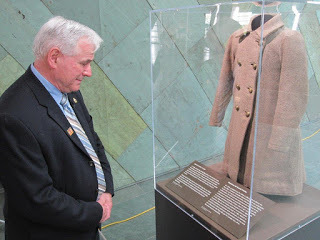 Alan J. Buick seeing the child's coat at the Canadian War Museum.
Alan J. Buick seeing the child's coat at the Canadian War Museum.(Photo courtesy of Hans Moor, Embassy of the Kingdom of the Netherlands, Ottawa, ON)
It is difficult to pinpoint any incident I told in The Little Coat book as being more significant than another but, if I were to pick just one, it would be when Sussie's (Sue's) family escaped on foot for two kilometres to the safety of the Canadian lines while her family was under fire from German soldiers.
The Little Coat is a perennial story, a story of love and compassion, of terror and human relationships – a perfect gift for men, women, and children ages 10 and up, or even just because. Once you read it, you'll understand the gratitude the Dutch still have for Canadians today and forever. This book captures the true compassion of the Canadian soldiers for the Dutch people in their darkest hour.
Editor's note: The Little Coat: The Bob and Sue Elliott Story was awarded Honourable Mention, 2010 Hollywood Book Festival. $4,500 from sales of The Little Coat has been donated to the Royal Canadian Legion Dominion Command Poppy Trust Fund. $1 from every book sold from 2013 on is donated to the Canadian War Museum, the new home of the 'child's coat' in this inspiring war story turned love story.
Published on December 07, 2017 21:40
November 17, 2017
A haircut and a hug from Poland
On a particularly emotional day a few months ago, I decided to get a haircut. I had been missing my departed loved ones – my husband, my parents, and my parents-in-laws – more than usual. I needed to do something to boost my spirits.
Instead of going to my usual salon, I went to a new place.
I am the kind of person who doesn't really enjoy chatting the whole time that my hair is being cut - partly because I can't see without my glasses on and partly because I am not comfortable chatting or sharing details of my personal life with a room full of strangers.
But this day was different.
The woman who cut my hair had an accent. My curious journalist-self kicked in and I asked her where she was from.
"Poland," she said.
Interesting, I thought.
"My mother was born in Poland, and my dad was born in a part of Ukraine that was Poland at one time," I told her.
This led to a conversation about whether I speak the Polish language (I don't); how long she's been in Canada (two years; she and her husband came for better work opportunities); how I and my husband wanted to go to Poland when we were in Europe in 2013 but we ran out of time, however my youngest sister went to Ukraine that year and saw the area where our dad was born.
The hairdresser asked whether I make any Polish food.
"I don't but my mom made perogies and cabbages rolls. What kinds of food do you make?" I asked her.
She told me she likes perogies, but she puts all kinds of different things in them - "white cheese, broccoli, garlic - delicious!"
Just then, I glanced up as she was trimming on one side of my head and I saw her name tag."Agnieszka."

I was dumbfounded. "Oh my gosh! That's my mother's name!" I exclaimed. "Agnes."
"Yes," she replied. "It is hard for people to say here."
I miss my mother very much. She was a strong, faithful Christian woman with a zany sense of humour and a passion for bright-coloured blouses.
I sat in awe of this circumstance – a Polish hairdresser who shared the same name as my mom.
I will not call it is a coincidence. In my daughter Lisa Driver’s first award-winning book, Opening Up: How To Develop Your Intuition and WorkWith Your Angels , she notes that what we often think of as “coincidences” are actually signs that the universe is sending us a message. Our angels want to let us know they are with us. I have had too many “coincidence” experiences in my life to just set these aside as accidental. The probabilities of me going to that shop on that day at that time when that particular hairdresser was available to cut my hair are too big to comprehend. Everything aligned for that to happen.
I sat and enjoyed the rest of the cut – which is difficult to do when you’re almost blind without your glasses on!
When the haircut was done, I put my glasses back on and noticed a keychain that was hanging on the drawer handle in front of the salon chair.
"I love Poland," it said.
I smiled.
I asked if I could take a photo of it.
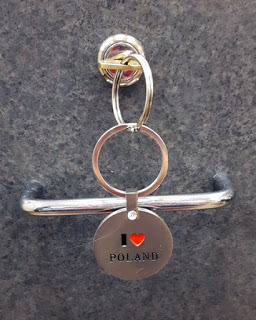
“Yes,” Agnesiewska replied. “This is better, " she added as she turned the ornament around to show me the other side of it.
"I Love Polska."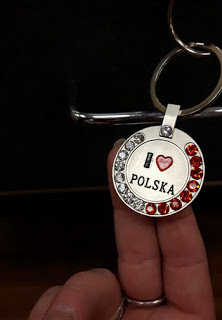
Much better.
I felt a huge grin forming on my face. A message of love from my angel mom. A reminder of my Polish heritage.
As I was paying for the trim, Agnesiewska asked me, "Your mother - she lives?"
"No,” I replied. “She passed away in 2011.”
"Oh... I sorry."
This precious Polish woman paused just long enough for me to let her response sink in.
Then she sighed and added, "Ah... Life!"
Life indeed.
Instead of going to my usual salon, I went to a new place.
I am the kind of person who doesn't really enjoy chatting the whole time that my hair is being cut - partly because I can't see without my glasses on and partly because I am not comfortable chatting or sharing details of my personal life with a room full of strangers.
But this day was different.
The woman who cut my hair had an accent. My curious journalist-self kicked in and I asked her where she was from.
"Poland," she said.
Interesting, I thought.
"My mother was born in Poland, and my dad was born in a part of Ukraine that was Poland at one time," I told her.
This led to a conversation about whether I speak the Polish language (I don't); how long she's been in Canada (two years; she and her husband came for better work opportunities); how I and my husband wanted to go to Poland when we were in Europe in 2013 but we ran out of time, however my youngest sister went to Ukraine that year and saw the area where our dad was born.
The hairdresser asked whether I make any Polish food.
"I don't but my mom made perogies and cabbages rolls. What kinds of food do you make?" I asked her.
She told me she likes perogies, but she puts all kinds of different things in them - "white cheese, broccoli, garlic - delicious!"
Just then, I glanced up as she was trimming on one side of my head and I saw her name tag."Agnieszka."

I was dumbfounded. "Oh my gosh! That's my mother's name!" I exclaimed. "Agnes."
"Yes," she replied. "It is hard for people to say here."
I miss my mother very much. She was a strong, faithful Christian woman with a zany sense of humour and a passion for bright-coloured blouses.
I sat in awe of this circumstance – a Polish hairdresser who shared the same name as my mom.
I will not call it is a coincidence. In my daughter Lisa Driver’s first award-winning book, Opening Up: How To Develop Your Intuition and WorkWith Your Angels , she notes that what we often think of as “coincidences” are actually signs that the universe is sending us a message. Our angels want to let us know they are with us. I have had too many “coincidence” experiences in my life to just set these aside as accidental. The probabilities of me going to that shop on that day at that time when that particular hairdresser was available to cut my hair are too big to comprehend. Everything aligned for that to happen.
I sat and enjoyed the rest of the cut – which is difficult to do when you’re almost blind without your glasses on!
When the haircut was done, I put my glasses back on and noticed a keychain that was hanging on the drawer handle in front of the salon chair.
"I love Poland," it said.
I smiled.
I asked if I could take a photo of it.

“Yes,” Agnesiewska replied. “This is better, " she added as she turned the ornament around to show me the other side of it.
"I Love Polska."

Much better.
I felt a huge grin forming on my face. A message of love from my angel mom. A reminder of my Polish heritage.
As I was paying for the trim, Agnesiewska asked me, "Your mother - she lives?"
"No,” I replied. “She passed away in 2011.”
"Oh... I sorry."
This precious Polish woman paused just long enough for me to let her response sink in.
Then she sighed and added, "Ah... Life!"
Life indeed.
Published on November 17, 2017 06:48
September 25, 2017
GRIEF AND LOVE ARE INTERTWINED
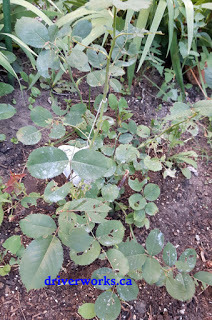 July 4, 2017
- A couple hours from now will mark 18 months since my wonderful husband, Al, left this earth to join the rest of the angels. (I can see some of you snickering right now because there were pieces of Al's personality that weren't exactly angelic ... and he would roll his eyes at that first sentence, I'm sure ... but none of us are perfect either and I believe his hug-filled, loving spirit is in a beautiful place right now, doing God's work.)
July 4, 2017
- A couple hours from now will mark 18 months since my wonderful husband, Al, left this earth to join the rest of the angels. (I can see some of you snickering right now because there were pieces of Al's personality that weren't exactly angelic ... and he would roll his eyes at that first sentence, I'm sure ... but none of us are perfect either and I believe his hug-filled, loving spirit is in a beautiful place right now, doing God's work.)Anyway ... as I was saying...
Like the rose I planted in Al's memory, I and our children (and our closest family and friends) have had ups and downs these past 18 months. We've had moments of blossoming and beauty, and moments of wilting and falling apart. We are continuing to live our lives though, one moment at a time, one day at a time, one season at a time, and we thank you for standing by us and nurturing us, especially when we needed it most.
We are healing. Grieving still, but healing a bit more every day.
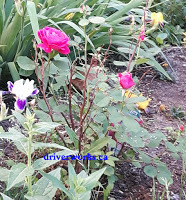 Our children and I have honoured Al in our own ways - with words both written and spoken, with plants and other memorials, with donations to charities he would love, and in trying to be the best people we can be. We will continue to keep his name on our lips and in our hearts as we move forward in our lives without him.
Our children and I have honoured Al in our own ways - with words both written and spoken, with plants and other memorials, with donations to charities he would love, and in trying to be the best people we can be. We will continue to keep his name on our lips and in our hearts as we move forward in our lives without him.I've learned that grief is more about love than it is about loss. Yes, we miss the one who died, but we wouldn't grieve them if we didn't love them.
We grieve because we loved. They are intertwined and will always be so.
" 'Tis better to have loved and lost / Than never to have loved at all," wrote Lord Alfred Tennyson. I agree.
I and many of you won't forget Al or our story together. I wouldn't have it any other way. He was a big, bold, rambunctious blessing to me and to so many others, including many of you who are reading this. Thank you for helping me, our children, and our closest family and friends get through these 18 months.
We will be fine. He wouldn't want it any other way.
Let's carry on.
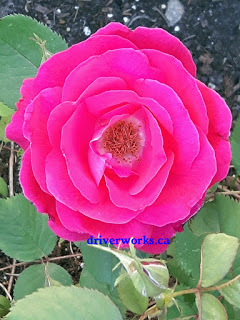 In full bloom, the Winnipeg Parks rose bush purchased and planted in our yard in memory of Al.
In full bloom, the Winnipeg Parks rose bush purchased and planted in our yard in memory of Al.
Published on September 25, 2017 20:39



